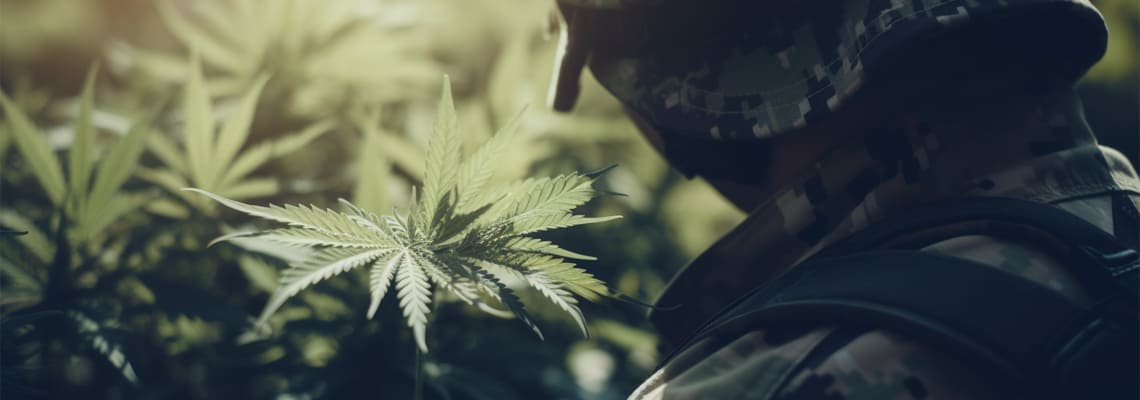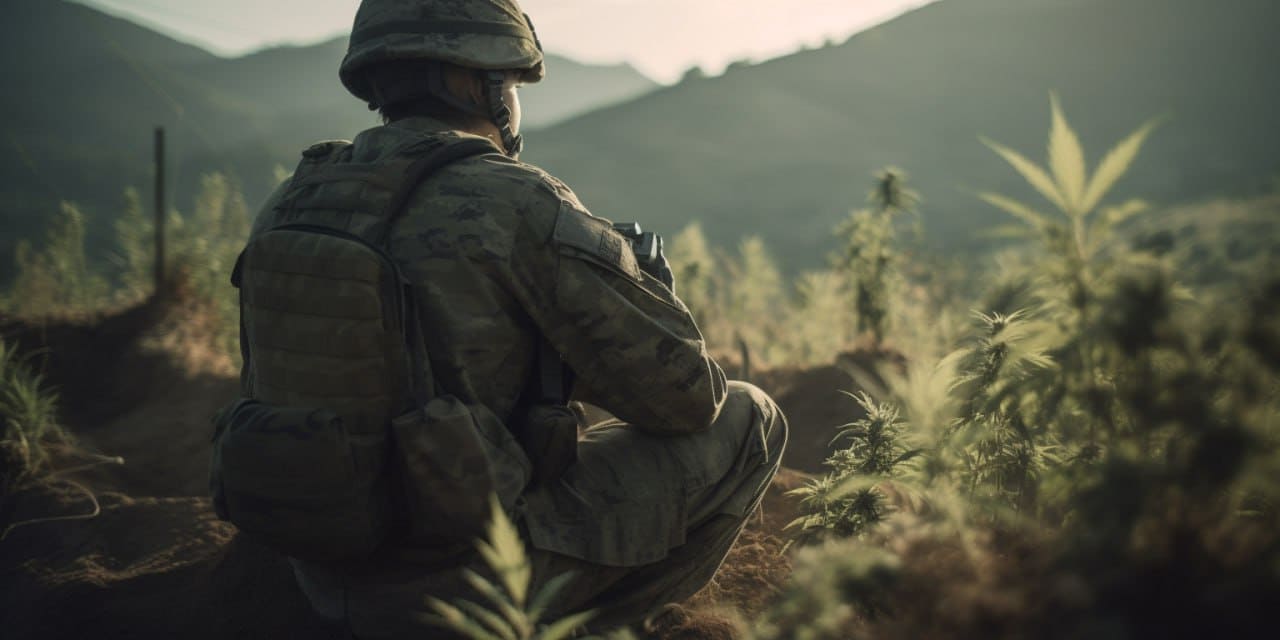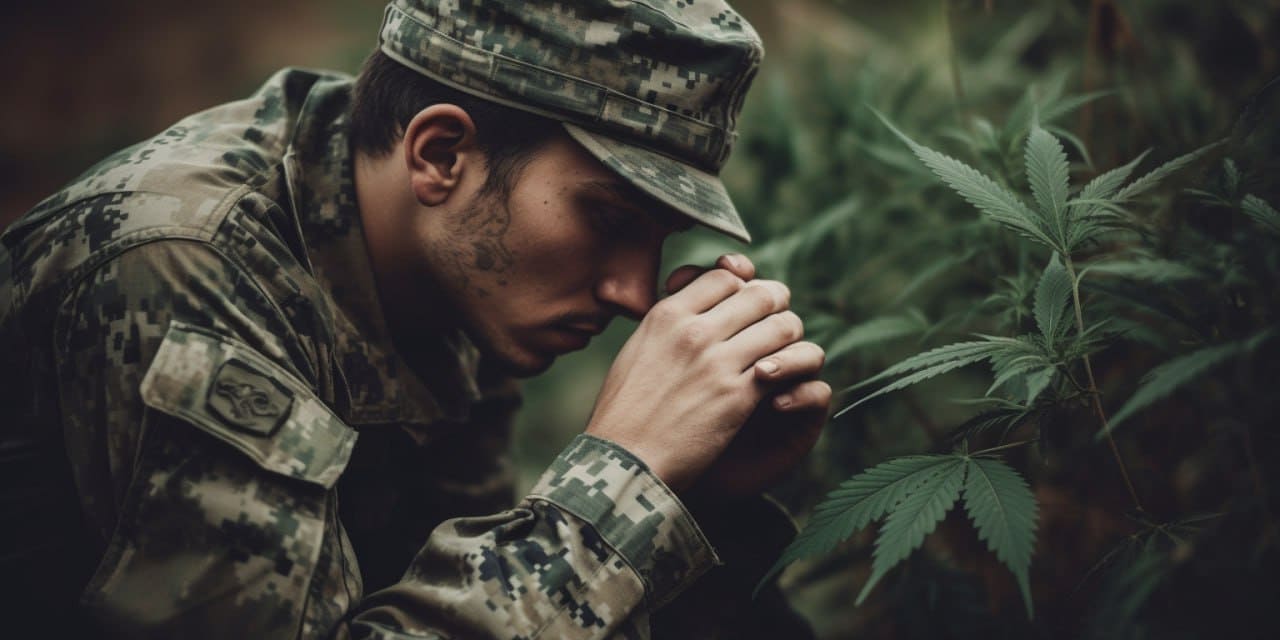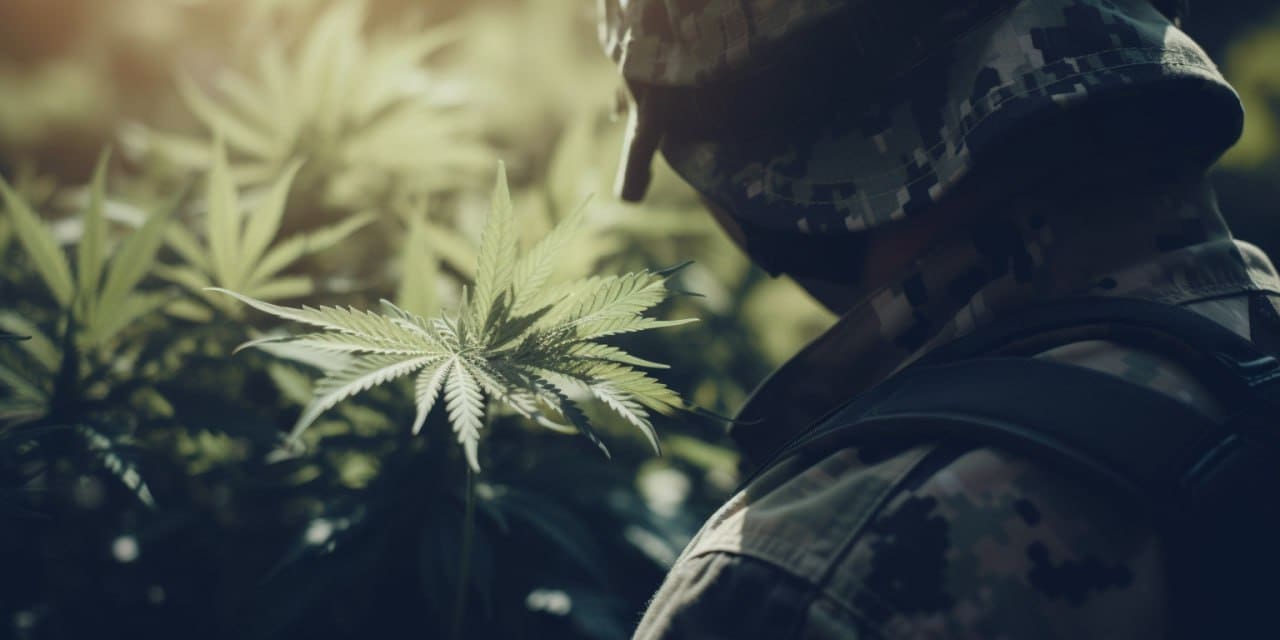There seems to be nothing in your cart.
Didn't find what you were looking for? Contact our consultant.
To save your shopping cart until your next visit, create an account or register .
Browse our Hits sales
There seems to be nothing in your cart.
Didn't find what you were looking for? Contact our consultant.
To save your shopping cart until your next visit, create an account or register .
Browse our Hits sales

*This text is provided for informational purposes only. The information provided by the author is his own development using information from publicly available sources. The company is not responsible for the submitted copyright material.
Contents
Post-traumatic stress disorder (PTSD) is a mental disorder that can develop after a person has been exposed to a traumatic event, such as a death threat, serious injury, or sexual assault.
The clinical picture varies and symptoms may include:

Unfortunately, the military conflict left an indelible mark on tens of thousands of soldiers and civilians. Many of them suffer from post-traumatic stress disorder (PTSD) as well as physical trauma, including phantom pain after amputations. These problems lead to serious health problems, including anxiety, sleep and appetite disorders, which are often difficult to control with traditional treatments.
In light of this serious problem, there is a growing need for new and effective approaches to treatment and rehabilitation. One of the potentially effective methods is medical cannabis, which is increasingly recognized as a valuable drug in the world. Research has shown that cannabinoids such as tetrahydrocannabinol (THC) and cannabidiol (CBD) can relieve many of the symptoms of PTSD and related conditions.
Anxiety is one of the most common symptoms among war veterans, and cannabis can play a significant role in reducing this condition. THC and CBD act on cannabinoid receptors in the brain, which reduces feelings of anxiety. This can be especially useful for military personnel returning from conflict zones, where a heightened sense of vigilance and alertness was a necessary means of survival.
The phantom pain that veterans often experience after amputations can be extremely excruciating and difficult to control. Research has shown that cannabis can help manage neuropathic pain, including phantom pain, due to its specific analgesic properties.
Veterans also often suffer from sleep disorders such as insomnia and nightmares. Medical cannabis may help improve sleep quality by making it easier to fall asleep and reduce the frequency and intensity of PTSD-related nightmares. Previous studies have shown that 80-90% of patients with post-traumatic stress disorder suffer from sleep disorders. Nightmares and insomnia are among the most common symptoms. Patients who experience sleep disturbances are more likely to suffer from severe post-traumatic stress disorder, experience suicidal thoughts, self-injure, etc.
Finally, in the military who have lost their appetite, cannabis can help stimulate it and help combat weight loss and related problems.
While hostilities continue in Ukraine, securing access to medical cannabis for veterans could be a vital issue. In light of current circumstances, and given the severity of the public health challenges that veterans face, policies are needed to ensure that all available resources are used to support their health and well-being. This means seriously considering using medical cannabis as part of a rehabilitation strategy.
The purpose of this article is to review and compare the methods of treating PTSD in the military, to understand the effectiveness of various methods, their pros and cons.
Military personnel suffering from PTSD usually go through a series of traditional therapies that include psychotherapy, medication, and, in some cases, intensive group sessions or rehabilitation programs.
Cognitive Behavioral Therapy (CBT): In this form of therapy, the military learns to recognize and change harmful or negative thoughts and behaviors. They can also learn stress management techniques and fear and anxiety management techniques.
Prolonged Exposure therapy: This approach helps the military learn to deal with their feelings associated with a traumatic event. This includes talking about the traumatic event or visualizing it in a safe and controlled environment.
Image Rehearsal Therapy: This approach focuses on reversing nightmares and replacing them with more positive dreams.Window of Tolerance: This is a concept used to explain the body's response to stress or injury. During psychotherapy, the military learns to increase their "tolerance window" in order to reduce the symptoms of PTSD.
Selective serotonin reuptake inhibitors (SSRIs): These are antidepressants that can help manage PTSD symptoms such as sadness, anxiety, and irritability. Examples include fluoxetine (Prozac) and sertraline (Zoloft).
Tranquilizers: Medications such as benzodiazepines such as alprazolam (Xanax) and diazepam (Valium) can be used to reduce anxiety and tension.
Sleeping drugs: Drugs such as zolpidem (Ambien) or zopiclone (Lunesta) may be used to improve sleep quality.
Beta-blockers: Drugs such as propranolol can be used to manage the physical symptoms of PTSD, such as heart palpitations.
The choice of method of treatment and medicines, as a rule, depends on the specific symptoms that appear in the military. For example, antidepressants may be prescribed if the military has persistent feelings of sadness or hopelessness. Sleeping pills may be prescribed if insomnia or sleep disturbances are the main symptoms. Beta-blockers and tranquilizers may be prescribed to manage the physical symptoms of anxiety or stress.
Indeed, medication often plays an important role in managing PTSD symptoms. More and more military personnel are finding relief from their symptoms through a combination strategy that includes both psychotherapy and medication. However, medications are not always the best solution.The main problem with the use of drugs is the development of tolerance, or an increase in the body's resistance to the drug. This may lead to the need to increase the dosage, which in turn increases the risk of side effects. Side effects can be varied, including nausea, headaches, changes in appetite and mood, insomnia, diarrhea, dry mouth, and more.
Also, not all military personnel respond to antidepressants or tranquilizers in the same way. Some people may experience adverse side effects without much improvement in their condition, while others may not notice any effect at all.
So, what to do in such cases? One potential answer may be found in nature. Cannabis has been legalized in some countries and can be used to treat symptoms of PTSD. Cannabidiol, or CBD, one of the active substances in cannabis, has shown promise in managing PTSD symptoms without developing tolerance.

According to various treatment guidelines for post-traumatic stress disorder, treatment includes psychotherapy and medication when needed. The most evidence-based and effective treatments are cognitive behavioral therapy (CBT), especially long-term therapy, and eye movement desensitization and processing. However, a significant proportion of patients avoid psychological treatment, and the rejection rate among veterans is high. Remission rates with medications are only 20 to 30%, and their side effects cause low patient adherence to continue treatment, resulting in low efficacy. Given the limitations of these therapies and the need to effectively treat patients diagnosed with PTSD, interest in medical cannabis has increased in recent years.
Over the past two decades, there has been a growing body of literature suggesting the involvement of the endocannabinoid system (ECS) in the origin of post-traumatic stress disorder. The endocannabinoid system is the system of cannabinoids produced in our body and includes endogenous cannabinoids such as N-arachidonoylethanolamide (anandamide) and 2-arachidonoylglycerol (2-AG) and CB1 and CB2 receptors.
CB1 receptors are located primarily in the brain and are widely distributed in the same brain areas involved in post-traumatic stress disorder—the amygdala, hippocampus, and prefrontal cortex.
CB2 receptors are located predominantly in peripheral immunological tissues, although their presence has recently been reported in the central nervous system. In fact, the activation circuits and mechanisms involving CB1 and CB2 receptors are similar to the pathways involved in post-traumatic stress disorder.
By activating CB1 receptors in the amygdala, cannabis can potentially reduce fear, anxiety, and bad memories. By stimulating CB1 receptors in the prefrontal cortex, cannabis can increase serotonin levels, thereby reducing depression and improving mood, memory, and neurogenesis. cannabis can alsoreduce over-arousal and intrusive memories by activating CB1 receptors in the hippocampus, and thus may help reduce symptoms of post-traumatic stress disorder. In addition, studies demonstrate lower concentrations of endocannabinoids in patients with post-traumatic stress disorder. For example, in one study, endocannabinoid levels were measured in 46 people (24 with PTSD and 22 without PTSD) who were exposed to the 9/11 attacks. They found that levels of 2-arachidonoylglycerol (2-AG) were significantly lower in those who developed PTSD.
Many believe that treating PTSD patients with medical marijuana is solely for relieving tension and treating insomnia and nightmares. But the medical community knows otherwise, as medical cannabis is known to reduce major traumatic memories.
The scientific explanation is based on the fact that the cannabinoids found in medical marijuana affect areas of the brain responsible for learning and memory. Cannabis treatment allows the brain to reduce and soften flashes of traumatic memories, which reduces anxiety and minimizes other symptoms. At the same time, medical cannabis allows patients with post-traumatic stress disorder to fully function and live without injury.
Traditional treatment for PTSD includes antidepressants and psychotherapy, which are partially successful and come with many unwanted side effects. Pioneering research suggests that medical cannabis may be more effective in treating these patients. A study conducted at New York University in May 2018 showed that there is a link between cannabinoid receptors in the brain called CB1, which are activated during cannabis treatment, and an improvement in the condition of a patient suffering from PTSD.
The unique feature of cannabis lies not only in its ability to relieve pain and relieve spasms, but, more importantly, in its relaxing effect on the nervous system. Medical cannabis and preparations based on it are widely used to reduce stress levels, restore normal sleep and increase appetite. Many clinical studies have confirmed the effectiveness of this approach:
A 2009 Canadian study found that cannabis had a beneficial effect on the sleep of people suffering from PTSD. Although the use of hemp-based drugs (a synthetic substance that mimics the structure of THC) does not completely eliminate nightmares, the duration and quality of a night's rest is noticeably improved.
In 2011, highly stressed mice in Israel were divided into two groups, one of which received drugs based on psychoactive substances from hemp. As a result, the group taking these drugs stopped showing neurological and behavioral abnormalities associated with an overstrain of the nervous system.
In 2014, another study was conducted, which not only confirmed the results of the previous one, but also showed a significantly greater effectiveness of drugs based on medical marijuana compared to one of the most common antidepressants - Zoloft.
In the same 2014, a human study was conducted in the state of New Mexico. 75% of participants confirmed a reduction in the intensity of the main symptoms of PTSD after a course of drugs based on medical marijuana.
The impact of cannabis is especially striking. The psychoactive substances in cannabis affect associative responses, which plays a key role for people suffering from PTSD. Triggers such as loud noises or flashes of light can bring back traumatic memories. Cannabis weakens the connection between the trigger and the memory, making it less persistent, thereby reducing the intensity of the panic attack or aggression caused by the trigger.
Reviews of foreign doctors who prescribe cannabis for PTSD:
"We use medical cannabis in the form of CBD oil for our PTSD patients. We start at a low dose around 5mg and gradually increase up to 20-30mg per day, depending on the response of the patient. We have found that this helps to reduce anxiety and improves the quality of sleep.If CBD does not help, THC oil is included in the treatment.Increasing the dosage gradually, we find the ideal amount to reduce the disturbing symptoms.It is very important to adhere to the minimum required dosage of THC, in case of psychosis in the patient.In this case, it would be more appropriate to replace THC with more CBD."
"In my practice, I have recommended low-THC, high-CBD vaporizers for PTSD patients. Frequency of use and dosage will vary according to individual needs, but in general, I suggest starting low and increasing gradually to avoid vape pens help you get the right amount of cannabinoids, which is difficult to achieve when using inflorescences."
"For some of my PTSD patients, the use of medical cannabis has proven to be effective, especially in the form of tinctures. They usually start at 5mg twice a day and can increase to 10mg twice a day and more if needed. Patients report improved mood, sleep and overall quality of life. In many cases, drug therapy for PTSD becomes impossible due to the side effects experienced by the patient. In this case, Mother Nature and her medicine come to the rescue."
These testimonials from doctors demonstrate the diversity of approaches to the use of medical cannabis in the treatment of PTSD. However, despite the different forms of administration and dosage, the common method is to start with a low dose and gradually increase it to achieve the optimal effect and minimize side effects. It is important to remember that the dosage and form of administration should be individually selected by the doctor for each patient.

Using cannabis is not without its dangers. About 22% of cannabis users suffer from a cannabis use disorder, and 13% develop cannabis dependence. Cannabis use can increase the risk of developing psychosis and make it difficult to treat.
Reviews of the literature over the past two years examining the effectiveness of cannabis for symptoms of post-traumatic stress disorder contain a small number of heterogeneous studies with methodological problems and many limitations. To date, only two randomized controlled clinical trials have been conducted in patients with post-traumatic stress disorder. The first used the synthetic cannabinoid nabilone, and the second used cannabis flowers, but only for three weeks and was not long enough to show a significant difference from placebo. Several systematic reviews examining the effectiveness of cannabis for PTSD symptoms conclude that cannabis and synthetic cannabinoids may play a role in the treatment of PTSD, but there is currently limited evidence for their safety and efficacy. Therefore, more research is needed to better understand the efficacy and safety of cannabis in the treatment of post-traumatic stress disorder.
The use of medical cannabis to treat post-traumatic stress disorder (PTSD) is still a subject of research, but some research and patient reports suggest it can be quite effective.
In the US, where medical cannabis has been legalized in a number of states, PTSD is one of the main conditions for which cannabis can be prescribed. Patient reports and some research suggest that cannabis may help reduce PTSD symptoms such as anxiety, temper tantrums, and insomnia. PTSD is very common among American veterans, and the authorities are working to address this problem. However, all these studies are still at an early stage, and further detailed study is needed.
There are also studies in Canada and Israel on the use of cannabis for the treatment of PTSD. In Israel, which is one of the world's leading centers for cannabis research, research shows that cannabis can help reduce temper tantrums and improve sleep quality in people with PTSD.
Research has begun in Australia on the use of cannabis for the treatment of PTSD in military veterans. These studies are still in their infancy, but they promise to add valuable data to the growing body of research in this area.
It is important to note that despite these encouraging results, the use of cannabis to treat PTSD is not without risks. This may include the possibility of addiction, poor mental health, and negative effects on memory and concentration. Moreover, the effectiveness of cannabis may vary depending on the individual characteristics of the patient, including their genetics and history of cannabis use.
Israel has one of the longest running medical cannabis programs in the world, starting in the 1990s. However, the use of medical cannabis for PTSD in Israel only began in 2014. In June 2014, the Israeli Ministry of Health approved the use of medical cannabis products for the treatment of patients with PTSD, thus joining many other Western countries that allow such treatment, after extensive research proving that it is very effective in relieving the symptoms of PTSD. Israel's decision is particularly important as it opens the door for the treatment of soldiers suffering from the fighting and civilians who have suffered from terrorist attacks.
By 2018, the use of cannabis for PTSD had increased to almost 10% of the total number of permits, although in Israel the prevalence of PTSD is lower than in the US (1.5% vs. 6.8% respectively). Medical cannabis is available as dried buds for inhalation or smoking, and as an oil for sublingual ingestion. A license to use cannabis for medical purposes for post-traumatic stress disorder requires an application by the treating psychiatrist to the Medical Cannabis Division of the Ministry of Health on behalf of the patient. The licenses are valid for a year and require the psychiatrist to request an annual license renewal. The initial dose is 20 g per month with a possible increase of 10 g on the recommendation of the attending physician.
Doctors advise patients to start with a low THC strain. Cannabis is dispensed in specialized pharmacies that have received special permission from the Ministry of Health. According to the guidelines of the Ministry of Health at the time, medical cannabis may be prescribed to patients diagnosed with moderate or higher post-traumatic stress disorder, lasting at least three years and characterized by severe stress.Cannabis will only be given after at least two trials with different drugs and two attempts at psychological intervention. Contraindications to treatment include a history of psychosis or drug abuse.
Despite the mixed data, medical cannabis shows promise in the treatment of PTSD. It can help improve sleep quality, reduce anxiety levels, and reduce the temper tantrums that are often associated with this condition. However, like all medications, it should be used under the supervision of a medical professional. Despite some encouraging data, more research is needed to determine exactly how and for whom medical cannabis may be most effective in treating PTSD. This includes research on long-term safety and efficacy, as well as research on how cannabis can be used in combination with other treatments.
Medical cannabis can be an important tool in the treatment of PTSD, but it's important to remember that it's not a "one size fits all" solution. Its effectiveness and safety may vary depending on the individual characteristics of the patient and his specific condition. You should always discuss all treatment options with a medical professional before starting a new course of treatment.
Author: Dmitry Morgan
No, medical cannabis is not the "one solution" for all people with PTSD. The effectiveness of its use may vary depending on the individual characteristics of each patient, including genetics, history of cannabis use, and the characteristics of a particular disorder. Cannabis helps with many of the symptoms that PTSD patients experience, but it's best to consult with a specialist.
Despite the potential benefits, the use of medical cannabis also comes with risks. This may include the possibility of addiction, deterioration in mental health, and negative effects on memory and concentration. In addition, side effects such as dizziness and increased anxiety or paranoia may occur, which is especially common with high THC levels. In this regard, it is recommended to use varieties with a predominant amount of CBD.
The time it takes to see improvement can vary greatly depending on the individual patient and how they respond to cannabis. Some people may notice improvement immediately, while others may take longer. It is important to remember that CBD has a more cumulative effect than an immediate one.